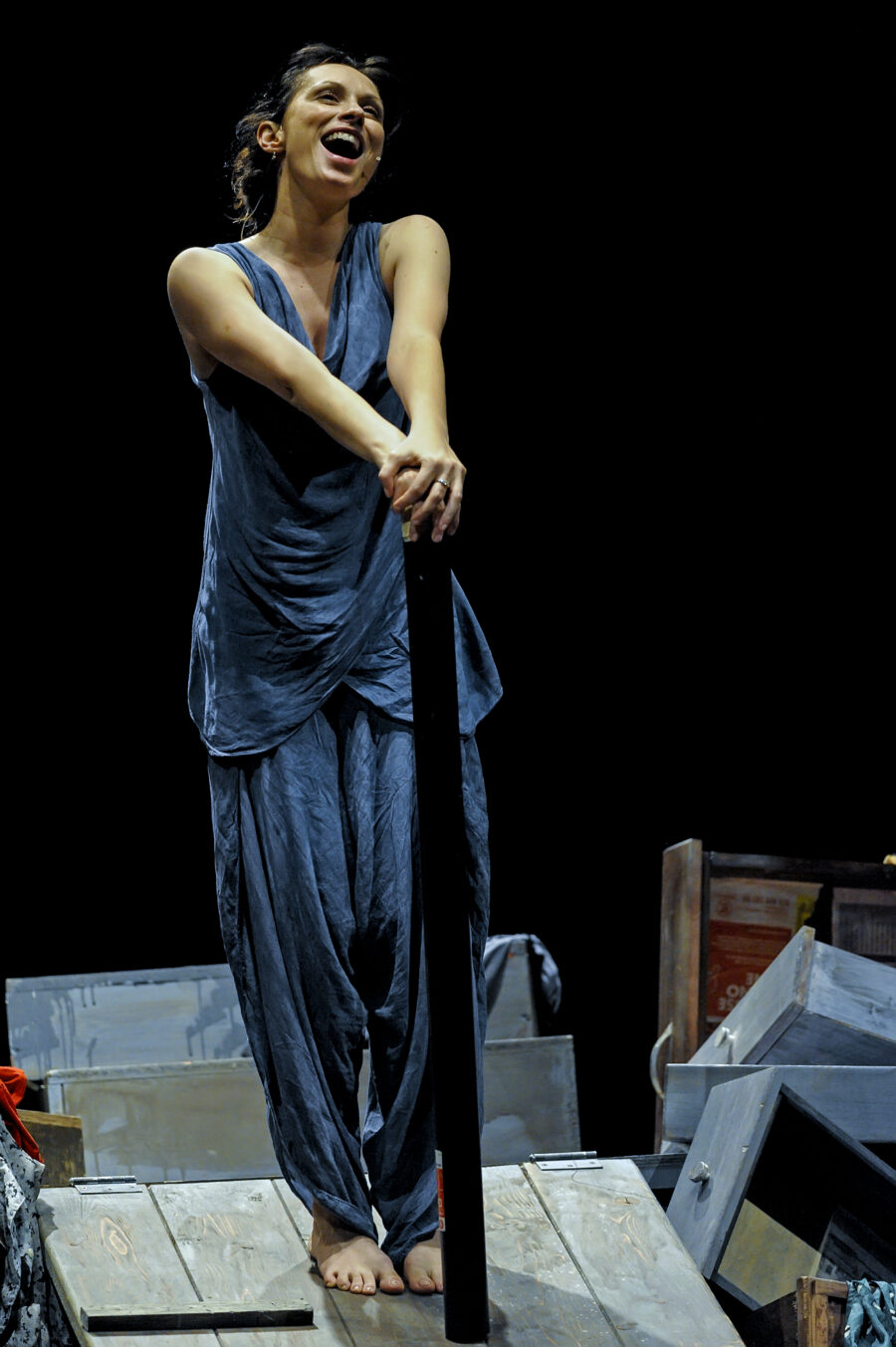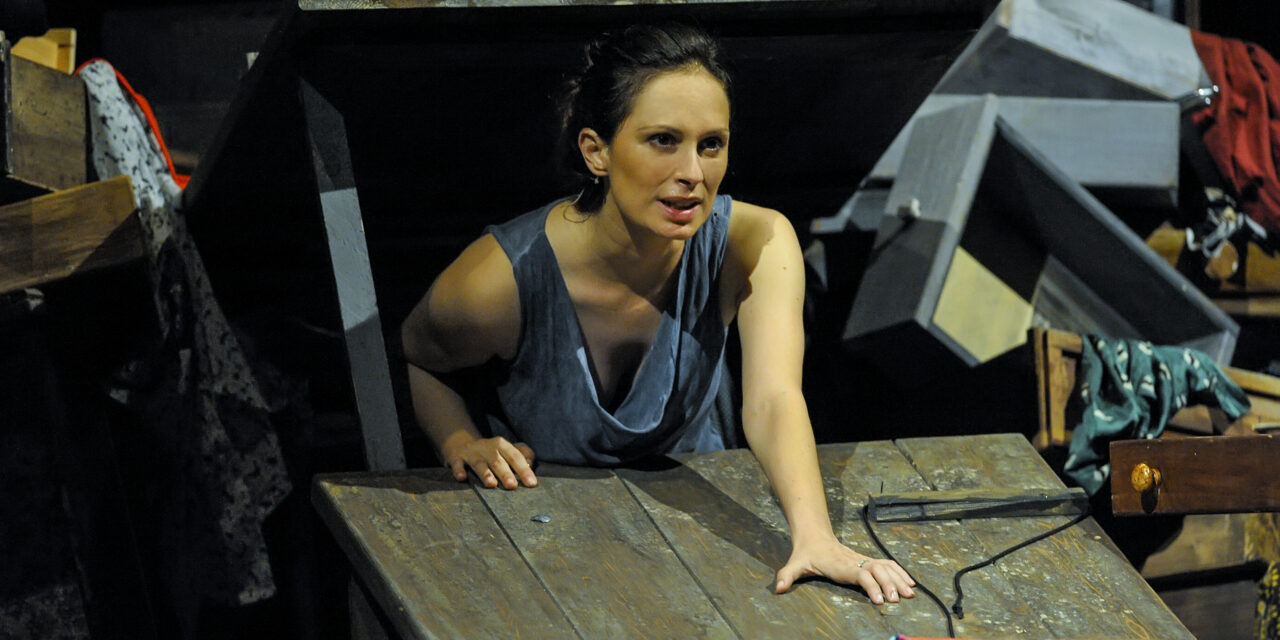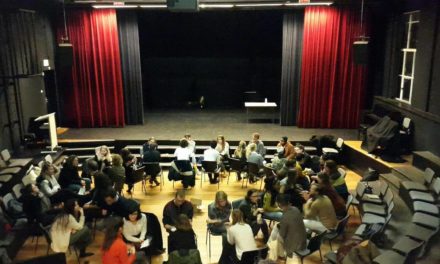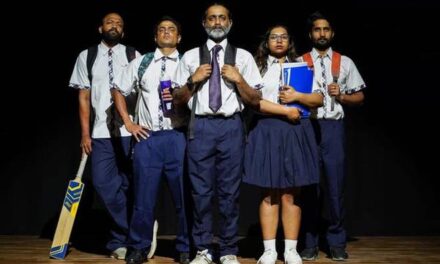The In Scena Festival is an ambitious undertaking. Presenting work each year by Italian artists, this Festival features Shows, Readings, Special Events, and a Conference. In its 7th Season, In Scena isn’t afraid of the potential of performance to break barriers and define culture. The work is by Italian artists, and it is something of a dream for those who speak Italian to see contemporary work performed in its original language.
Seeing The Last Day of Sun (L’Ultimo Giorno Di Sole), with text & music is by Giorgio Faletti, was refreshing. The play is set simply at The Cherry Lane Theatre Studio, with open drawers set on the stage, provided by Set Designer Francesco Fassone. Objects are from childhood or another point in one’s life. Tracing bits of tape, the soloist in this production takes a journey on the floor, finding a pathway of remembrance. While celestial in nature, the story, published in 2017, finds itself rooted in friends and chance encounters. Having formerly written lo uccio and Da quando a ora, Giorgio Faletti has developed a devoted audience in Italy and the US. This year, they showed up again to hear the discourse about roads to traverse and the Heavens with which to encounter.
His work is edgy, and like Dante’s Inferno, the story moves through a series of meetings gone wrong. Love never seems to find cohesion, and instead, what we hear is a poet’s rage and his tragic yearning toward the great beyond. Chock full of meaning, the text holds the truth of deliberate action. There are some that step back and look objectively, but others who must be deep in the trenches, feeling through the moments that define them. L’Ultima Giorno di Sol is meant to shake you up, and wake you to the possibility that you find the truth when you dig deeper, look around you, and discover the possibility of traveling to the stars.

Credit: Franco Rabino
Brave Actress Chiara Buratti has a perfect command of the text, performed completely in Italian. Sometimes in a green camouflage shirt, she finds herself, like a modern dancer, rooted into the floor, pacing through space, finding gesture after gesture. At times, the piece has a precision that is alarming. Like a serpent striking at exactly the right prey, the words sting. Discussions of revenge, intermixed with revelations about one’s first love or finding the feminine, are delivered in a freshly recalled sequence of events, with a quick-witted revelation.
“With that music still lingering in my head, I got here, to my favorite place, where I always sought refuge when I felt melancholic or just wanted to be alone. I climbed to the top of the hill, among the sunfaded grass or the dry flowers.“ – Giorgio Faletti
The play was directed by Fausto Brizzi, a director of theater and film, originally from Rome. He has a great appreciation of reverie. While the words re-coil a bit, the tone shifts occasionally, causing one to deeply empathize with the playwright’s last days on the planet. The story breaks out into song, with Musical Arrangements by Andrea Mirò. Meant for a singer, the eight songs sound a bit thin at The Cherry Lane Theatre Studio. It could be a recorded track. In this way, the ambition of the piece surpassed the presentation, falling a bit short in terms of musical execution.
Memorializing an artist through a theatrical production is a delicate matter. The artist completed this work in 2014, in the last six months of his life. His colleagues introduced the work and played a recording of him singing at the end of the show. The Last Day of the Sun remains a fine work of poetry, and it was a fitting remembrance on May 12, the evening before the Closing Night Special Event at the In Scena Festival.
In Scena was presented in venues around New York City from April 29-May 13.
This post was written by the author in their personal capacity.The opinions expressed in this article are the author’s own and do not reflect the view of The Theatre Times, their staff or collaborators.
This post was written by Marcina Zaccaria.
The views expressed here belong to the author and do not necessarily reflect our views and opinions.


















